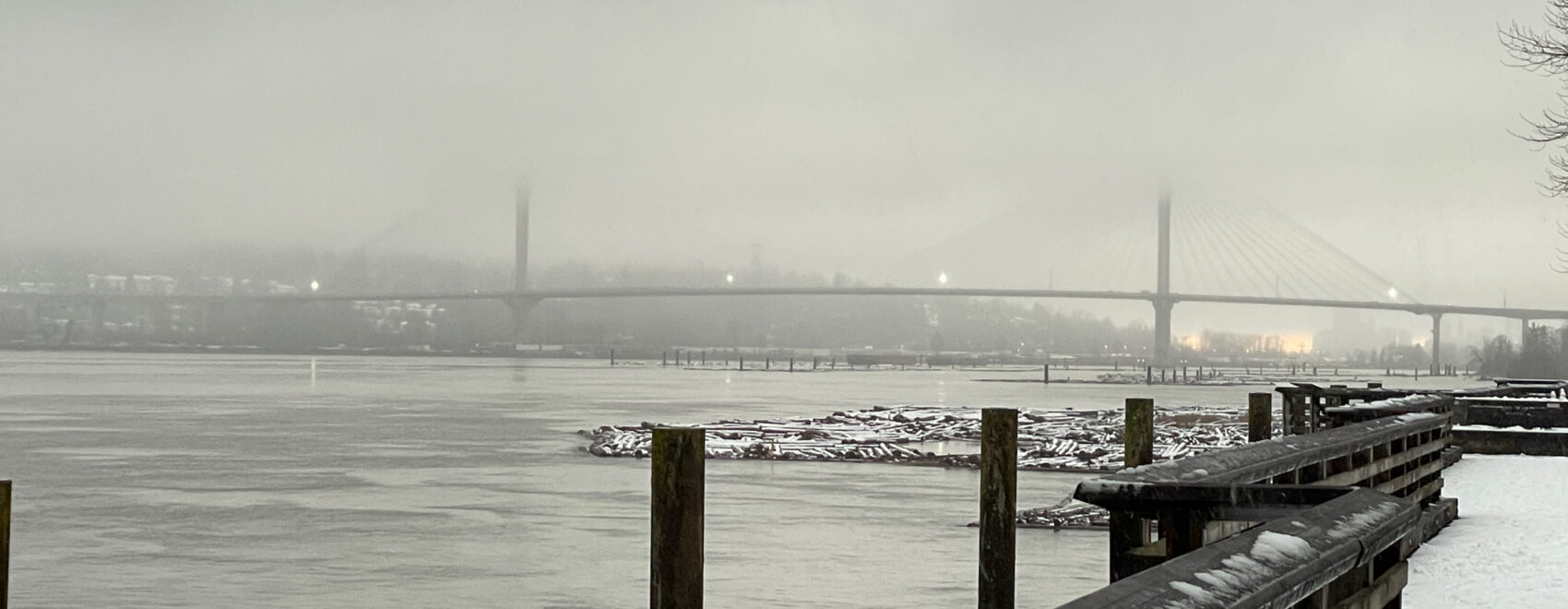The Port Mann Bridge, a vital artery in Metro Vancouver’s transportation network, stands as a testament to modern engineering amidst a landscape rich in geotechnical and environmental complexities. Here are a few of the many specific case studies that highlight the challenges and solutions encountered in this region.
I covered some of these and more in the video below:
Full Scale Pile Load Test
A pivotal geotechnical endeavour was the execution of a full-scale instrumented static pile load test. This test was integral to validating the design assumptions for the bridge’s deep foundation system.
The test involved a large-diameter steel pipe pile driven into the complex subsurface strata characteristic of the Fraser River delta. The pile was instrumented with strain gauges and displacement transducers to monitor its behaviour under load meticulously. The primary objectives were to assess the pile’s load-bearing capacity, evaluate settlement characteristics, and observe load transfer mechanisms along the shaft and at the toe.
The outcomes of the load test were instrumental in refining the foundation design. The empirical data obtained allowed engineers to optimize pile lengths and diameters, leading to a more efficient and economical foundation system. Notably, the successful testing reduced the required number of piles by approximately 30%, resulting in significant cost savings for the project.
This case study underscores the critical role of full-scale load testing in geotechnical engineering, particularly for large infrastructure projects. By validating design parameters and enhancing the understanding of pile-soil interactions, such tests contribute to the development of safe, efficient, and cost-effective foundation solutions. You can read more about this at:
Environmental Considerations: Impact on Salmon Migration
The Fraser River is renowned for its salmon runs, and any infrastructure development must consider potential environmental impacts. During the Port Mann Bridge project, concerns were raised about the effects of construction activities on salmon migration routes. Sediment dispersion from in-river works posed a risk to water quality, which could adversely affect spawning habitats.
To mitigate these environmental impacts, a comprehensive Environmental Management Plan (EMP) was developed. This plan included measures such as timing restrictions to avoid critical migration periods, installation of silt curtains to control sediment dispersion, and continuous water quality monitoring to ensure turbidity levels remained within acceptable limits. Additionally, habitat compensation initiatives were undertaken, including the creation of new spawning channels and riparian planting, to offset any habitat loss resulting from the construction activities.
Innovative Use of Lightweight Fill Materials
An innovative aspect of the Port Mann Bridge project was the use of Expanded Polystyrene (EPS) as a lightweight fill material for approach ramps and embankments. The underlying soft soils in certain areas posed challenges related to settlement and stability. Traditional fill materials would have exerted significant loads, leading to excessive settlement and potential stability issues.
EPS, with its low density and high compressive strength, provided an effective solution. Its application reduced the load on underlying soils, minimized settlement, and accelerated construction timelines. Geotechnical analysis confirmed that EPS fill could withstand the anticipated loads and environmental conditions, ensuring long-term performance. This case study highlights the importance of innovative material use in geotechnical engineering to overcome site-specific challenges.
You can learn more at: TAC 2014 Conference – Paper on the Use of Lightweight Fill
Seismic Instrumentation for Structural Health Monitoring
Given the seismicity of the Metro Vancouver area, monitoring the structural health of the Port Mann Bridge is paramount. A state-of-the-art seismic instrumentation network was installed to provide real-time data on the bridge’s response to seismic events. This system includes accelerometers and displacement sensors strategically placed on the bridge’s superstructure and foundations as described at: Ref Tek’s Strong Motion Technology.
The data collected facilitates immediate assessment of the bridge’s structural integrity following seismic events and informs maintenance and retrofitting decisions. This proactive approach ensures the bridge’s resilience and safety, safeguarding both the structure and its users.
Complex Situations Call For Innovative Solutions
These case studies underscore the intricate interplay between geotechnical challenges and environmental considerations in the design and construction of infrastructure within the Fraser River basin. They highlight the necessity for comprehensive site investigations, innovative engineering solutions, and proactive environmental management to achieve sustainable and resilient infrastructure development.
This article was generated by Chat GPT with edits done by the author to provide an accurate summary of some of the innovative solutions used around this bridge.

Leave a Reply